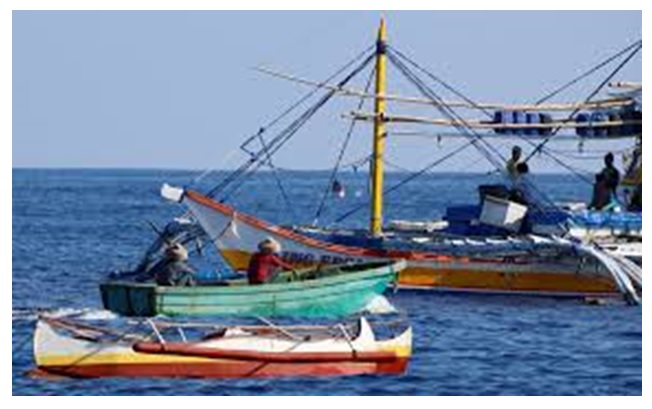More and more foreign commercial fishing vessels have entered the Philippines’ fishing grounds, including its municipal waters, in the past few years, threatening depletion of the country’s marine resources if their activities remain destructive and unchecked, maritime experts warn.
Data gathered through the Visible Infrared Imaging Radiometer Suite (VIIRS) and analyzed by the fisheries monitoring group Karagatan Patrol showed a dramatic increase since 2012 in the number of industrial-scale vessels in the West Philippine Sea, waters within the country’s 370-kilometer exclusive economic zone (EEZ) in the South China Sea.
More ships are seen inching toward the country’s coastline, with many already encroaching on municipal waters off the provinces of Palawan, Zambales and Mindoro.
China, Vietnam, Taiwan
While the identity of the vessels cannot yet be ascertained, experts agree that the majority could be coming from China and other countries like Vietnam and Taiwan, where maritime enforcers have previously arrested crews for poaching and other illegal activities in Philippine waters.
The weakness of the government’s vessel monitoring capability and the lax enforcement of laws on the country’s own waters are to blame for the presence of these foreign vessels in the Philippine EEZ, also the designated fisheries management areas, the experts said.
With massive encroachment on Philippine waters, local fishermen and coastal villages suffer the most, according to Jessie Floren, Karagatan Patrol geographic information expert.
“The municipal waters are for marginalized fisherfolk who cannot afford to go to deeper seas,” Floren said in an interview on Thursday. “With the entry of these foreign commercial vessels in these areas, the impact would not only be on certain individuals, but on entire communities dependent on marine resources.”
Under the Fisheries Code, municipal waters are areas within 15 km from the coastline, including offshore islands.
Only fishing boats weighing less than 3.1 gross tons and using passive gears, such as hook and line, are allowed in these waters.
Rampant commercial fishing
But data analyzed by Karagatan Patrol showed rampant commercial fishing in these areas, including waters off northern and western Palawan and the Zamboanga Peninsula.
Beyond its primary use for weather monitoring, VIIRS—a sensor aboard a weather satellite—detects night lights both on land and on water.
Using an algorithm developed by the Earth Observation Group of the US National Oceanic and Atmospheric Administration, it can also detect “lure lights” or “superlights” that huge vessels use to attract fish.
Karagatan Patrol collated the data every April, from 2012 to 2019, choosing that specific month when cloudless skies offer sharper images.
The maps clearly show that foreign vessels have grossly overpopulated the biodiversity-rich West Philippine Sea since 2012, with high concentrations around the Kalayaan Island Group and off the coastlines of provinces facing the western seaboard.
“Small-scale fishing boats cannot be detected because their lights are very small,” Floren said. “These are really commercial, if not industrial scale, fishing activities.”
Data provided by Karagatan Patrol to the Inquirer showed that an average of 11,261 commercial fishing vessels had been detected every April from 2012 to 2019 in the two fisheries management areas in the West Philippine Sea.
These areas include Recto (Reed) Bank in the Kalayaan Island Group and Panatag (Scarborough) Shoal, both rich in high-value fish and other marine resources.
A monthly count in April 2017 alone showed as many as 14,852 fishing vessels in these areas, with more than 10,600 commercial ships in waters off Palawan and around the Kalayaan Islands.
On a daily basis, more than 350 vessels are detected by the sensor in these waters.
These are conservative figures, Floren said, as each dot plotted on the maps can represent more than a single vessel in a 25-hectare area.
The dizzyingly high volume of commercial vessels in the West Philippine Sea, including those in the country’s fishing grounds, can lead to the collapse of fish species due to overfishing and destructive fishing methods, such as bottom trawling and the outright destruction of coral reef ecosystems.
Automatic identification
While all big boats should have automatic identification systems (AIS), Floren said the majority of those spotted in the West Philippine Sea did not have these.
Some have been stationary for a long time, he said.
Read more from the source: inquirer

